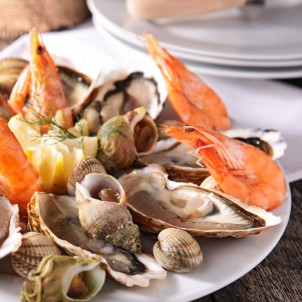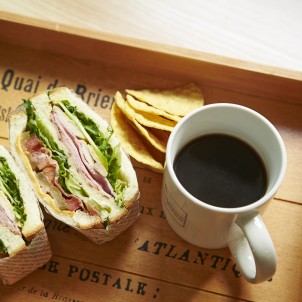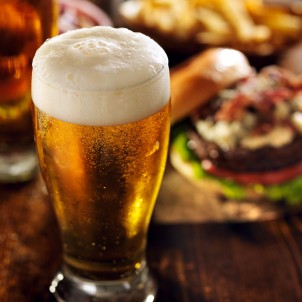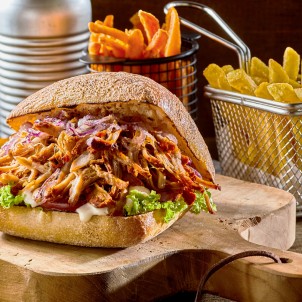Discover the best pubs & restaurants in East Worthing
![]() Town/City Name
Town/City Name
East Worthing
![]() County
County
West Sussex
![]() Population
Population
110,570 (Worthing)
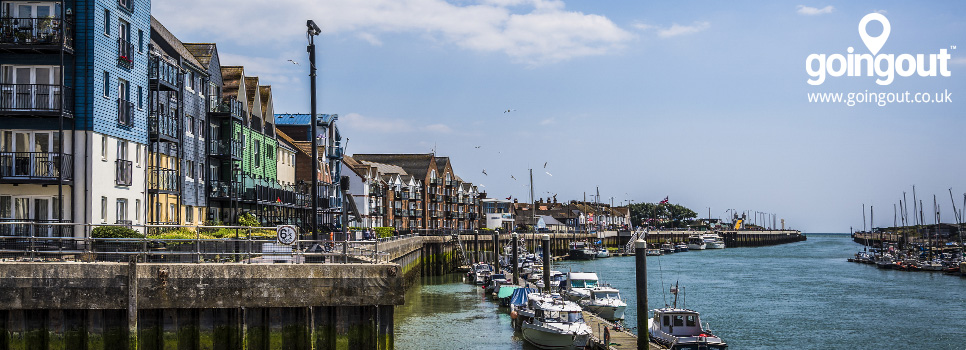
 About East Worthing
About East Worthing
East Worthing is a suburban area in the east of central Worthing, a scenic seaside town in Sussex. Initially a part of Broadwater parish, East Worthing is famed for scenic coastlines and charming Edwardian and Victorian houses.
The residential area of East Worthing is home to various historical sites and old buildings. Two of these must-see landmarks are the Church of St. Charles Borromeo and the Beach House in East Worthing’s seafront. One of the place’s architectural treasures is the St. George's Church which is greatly appreciated for its English Gothic design.
Going out in East Worthing means enjoyable trips to theatres, art galleries, seafront gardens, amazing food, pier amusements, and trail parks. The Worthing Museum and Art Gallery holds an extensive collection of paintings including William Holman Hunt’s ‘Bianca’ and Stanley Spencer’s ‘The Furnace Man.’
Restaurants in East Worthing have a variety of appetizing plates from Mexican, Italian, Spanish and Turkish cuisine. Ingredients for seafood dishes are guaranteed fresh from the sea. Dining experience is best with the seaside view. The cozy cafés and bistro in the area are classic places to hang out.
Sitting on the western part of Worthing, the Highdown Gardens is a shelter for rare varieties of plants, flowers, and trees. Although it is the least known site to visit in the area, the garden is considered to be a National Collection. Best time to tour the garden is in spring and summer when flower buds such as daffodils, snowdrops, and Bearded Iris begin to bloom in radiant colors. Highlights also include Hellebores or Lenten rose, and the Scillas.
Travelling in Worthing by railway is convenient. The trains stopping at the East Worthing railway station, which opened in 1905, transport passengers to central Worthing and to Brighton. There are also buses that head to the town center.
Worthing Pier created waves in the 90s indie scene when the band called Gene used its image as the front cover of their album.
 Places to eat in East Worthing, Restaurants in East Worthing
Places to eat in East Worthing, Restaurants in East Worthing
 Places to drink in East Worthing, Pubs and Bars in East Worthing
Places to drink in East Worthing, Pubs and Bars in East Worthing
 A brief history of East Worthing
A brief history of East Worthing
Worthing has some of the most memorable archaeological sites in Europe. Four of the country’s 14 flint mines lie seven miles from the town center. There are more discoveries of artefacts, tools, and other prehistoric remains as time passed. Some of the sites include Cissbury, Blackpatch Hill, and Harrow Hill.
Several Worthing roads, including the Tarring Road, originated from the Roman grid system called centuriation. The grid system also lay out the tracks and borders that separate the town from other parishes such as the Durrington and Gorring.
Some buildings in Worthing have Roman roots as well. For instance the town’s Museum and Art Gallery was established in the location of a Roman farmhouse. Romano-British dwellings have also been unearthed in parts of Durrington, Cissbury, and the Downs.
The Domesday Book cited Worthing as two divisions of hamlets – the Mordinges and the Ordinges. At the conclusion of the Norman Conquest, the First Lord of Bramber, William de Braose handed over the manor of Ordinges, to Robert le Sauvage whose successors reigned over the town for about two centuries.
In the 18th century, Worthing slowly began to turn into a seaside resort as the town attracted larger crowds. Lodging houses became a trend and the visits from British royalties boosted the town’s fame.
The East Worthing was previously a part of the Broadwater parish. The 18th-century brickworks played a vital role in building the first houses in the area.
In 1850, the hamlet of Worthing sustained its rapid development and expansion. The development reached the eastern area which was later named East Worthing. With great expectations for further growth, huge independent villas were built, along with other structures that supported the area’s glasshouse industry.
 Popular things to do in East Worthing
Popular things to do in East Worthing
- See rare plants and trees at the Highdown Gardens - https://www.highdowngardens.co.uk/
- Stop by the English Martyrs Catholic Church - https://english-martyrs.co.uk/
- Pick some fruits and vegetables at the Roundstone Farm - https://www.roundstonefarm.co.uk/
- Discover the town’s history and crafts at the Worthing Museum & Art Gallery - https://wtam.uk/your-visit/venues/#museum
- Watch excellent acts in the Connaught Theatre & Cinema - https://wtam.uk/
 Free things to do in East Worthing
Free things to do in East Worthing
- Explore Highdown Hill - https://www.nationaltrust.org.uk/days-out/regionlondonsoutheast/south-downs
- Have fun at the Brooklands Pleasure Park - https://www.adur-worthing.gov.uk/parks/find/worthing/brooklands-park/
- Roam around the Steyne Gardens - https://www.adur-worthing.gov.uk/parks/find/worthing/steyne-gardens/
- Drop by the Worthing War Memorial - http://www.roll-of-honour.com/Sussex/Worthing.html
- Discover contemporary art at The Forge Gallery - http://www.theforgeworthing.co.uk/
 Great for kids in East Worthing
Great for kids in East Worthing
- Experience thrilling adventures at the Time Lock Escape Rooms - https://www.escapegameworthing.com/
- Watch movies at the Dome Cinema - https://domecinema.co.uk/DomeCinema.dll/Home
- Play some games at the RanSacked Board Game Lounge and Escape Rooms - https://www.ransacked.co.uk/
- Make artworks at the Art-Ful - https://art-ful.co.uk/
- Hit the tracks at the Brooklands Go Karts - http://www.brooklandsgokarts.co.uk/
 Great for dogs in East Worthing
Great for dogs in East Worthing
- Relax at The Bluebird Café
- Enjoy tea time at the Highdown Tea Rooms
- Indulge in gourmet sandwiches and treats at The Edge Café
 Dog friendly bars
Dog friendly bars
- Ye Olde House at Home
- The Corner House Free House & Garden
- The Egremont Bar & Restaurant
 Dog friendly restaurants
Dog friendly restaurants
- The Beach House
- Picnic Cafe
- The Egremont Bar & Restaurant
 Did you know?
Did you know?
In the 19th century, the town’s coastline lost at least 70 yards of land as a result of significant erosion. The half of the Brick Inn got washed away as well in 1869.
Famous Irish poet Oscar Wilde wrote and completed the farcical play titled “The Importance of Being Earnest” when he visited and stayed in Worthing in 1894.
 The hidden gems of East Worthing
The hidden gems of East Worthing
High Salvington Windmill is a Grade II listed destination in Worthing. Originally built in 1750, the working windmill underwent full and extensive restoration with the help of a group of volunteers. Today, it also serves as a museum that educates visitors about the town’s history and early machinery.
 Unique to East Worthing
Unique to East Worthing
Some of East Worthing’s most remarkable residents are cricketer Edwin Bennett, journalist William A. Dunkerley, and poet W.E. Henley.
Game of Thrones star Gwendoline Christie was born in the borough of Worthing in 1978. She also portrayed the character of Captain Plasma in the iconic Star Wars films.
 find your venue
find your venue feature your venue
feature your venue